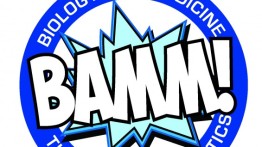Prof. Mintchev Presents Paper at Biology and Medicine Through Mathematics (BAMM) Conference held in May 2017
POSTED ON: May 20, 2016

Abstract
The generation and persistence of traveling wave solutions (TWs) in neural ensembles is a primary/major topic of mathematical neuroscience, where it finds applications to signal transmission and propagation of electrical impulses in brain tissues. Here, we report on some progress in our mathematical understanding of the underlying mechanisms providing robust presence of these regular patterns, in a class of phase oscillator chains modeled by the coupled ODEs
dθs = ω + ϵΔ( θs )δ( θs-1 ), Vs = 1, 2,• • •
dt
where θs ∈ T := ℝ/ℤ. The functions δ and Δ represent the stimulus due to coupling to left neighbors and the phase response curve (PRC) [1, 3] that modulates the input, respectively. Previously, such systems were shown to exhibit families of stable TWs in the case of smooth pulse-like stimulus and type-I PRC [4]; this was done by way of a combined numerical/analytical methodology that established wave existence via an iterative numerical algorithm and then deduced a stability theorem by way of a suitably-taken, numerically-justified hypothesis. A subsequent, mathematically-rigorous investigation of a simplified model [2], where the stimulus and PRC take either the value 1 (“on") or 0 (“off") on certain sub-intervals of T, has achieved the full spectrum of these results analytically; in the process, the latter study establishes a one-to-one correspondence between the wave's period and its velocity of propagation through the chain, a notion predicted by the aforementioned numerical work. At present, we aim to give an overview of the existence, stability, and wave generation results obtained in [2, 4, 5], as well as a discussion of strategies for extending these results to oscillator ensembles featuring type-II phase response and excitable dynamics.




